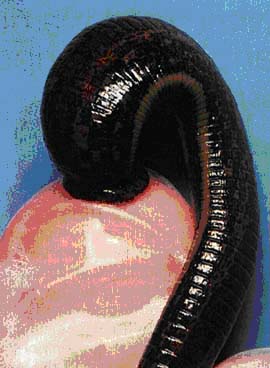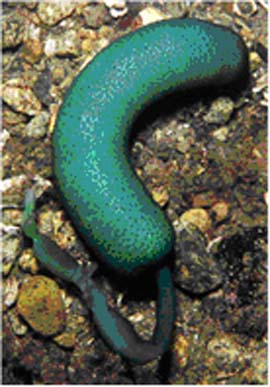Invertebrates in the medical service of man: Part 1 – The Biotherapeutic Worms
Charles Savona-Ventura MD DScMed FRCOG AccrCOG MRCPI
Professor of Obstetrics & Gynaecology
Faculty of Medicine & Surgery, University of Malta
The invertebrates have long received particular attention from the medical profession. Their medical importance lies primarily in their role as parasites or harbingers of disease conditions, and in the potential toxic stings or bites of some species. While the faunal diversity of the Maltese Islands is limited because of the restricted ecological diversity, a number of invertebrate species present in the Maltese Islands and in the surrounding sea have medical significance resulting from their parasitic or toxic capabilities. These species have been previously reviewed.1,2
While the medical import of the invertebrates remains generally an adverse one, there are a number of invertebrate species which have in the past and in present times been utilised to serve the medical needs of mankind giving rise to biotherapeutic options in the management of disease. Invertebrates which have contributed to biotherapy include members of the worms and insects.
Phylum ANNELIDA; Class: HIRUDINEA
The Medicinal leech – Hirudo medicinalis
Figure 1: Hirudo medicinalis

The humoral aetiology of disease introduced by Galen during the Classical Age considered that disease was due to alterations in the composition of these humors. Thus medical therapy aimed to restore the balance of these humors; thus venesection was a primary therapeutic option in a large majority of disease states. Venesection generally took the form of using a knife or lancet to open a vein, but a gentler and more desirable form of bleeding was to put a leech on the affected part and to let the animal engorge itself with the bad blood thought to dwell below the point of application. Leeches have been used medically for centuries; in Europe the use of leeches to drain off blood reached its height of popularity in the 19th century and persisted into the 20th century. Its use decreased pari passu with the introduction of effective pharmaceutical tools. The practice of bloodletting in the Maltese Islands dates at least to about the 2nd century AD as evidence by depictions on a tomb-slab from the late Roman/Palaeo-Christian period which depicts a set of surgical instruments that include two Roman cupping vessels. The gentler form of bloodletting through the use of leeches was also practiced in Malta. The first traced reference to the use of leeches in relation to the Maltese Islands dates to the late 16th century during the Plague epidemic that ravaged the Maltese Islands during 1592-93. The use of leeches became increasingly fashionable in Europe during the 19th century. The situation was similar in Malta, where medical practice shifted from the French school to the British school. By 1840 the Civil Hospitals in the Maltese Islands were using 2600 leeches per month. The smaller hospital – Santo Spirito Hospital – with an average population of twenty-five patients, was in 1851 using 300 leeches per month. Instructions about the application and care of leeches were given to the nursing and midwifery personnel during the late 19th and early 20th century. The use of medicinal leeches in Malta continued throughout the first half of the 20th century. The last reported use was in the late 1960s to manage severe congestive heart failure in an elderly patient.3
Venesection as a therapeutic option is now rarely considered, and situations where it is considered, preference is given to the formal collection of blood to use in cases of need. Leeches no longer play a role in venesection, however in recent years the useful medicinal properties of the blood-sucking leech are again being investigated, particularly in the field of plastic surgery. The salivary glands of leeches produce a cornucopia of pharmacologically active substances, including the anticoagulant hirudin (identified in 1884), an antihistamine, proteases, and possibly an anaesthetic and an antibiotic. In the 1980s leeches again “crawled out of their therapeutic closet” when plastic surgeons found its local anticoagulant and bloodletting properties useful for relieving venous congestion in grafts and transplants.4 Failure of adequate venous return from a graft reduces blood supply, causing tissue necrosis. Placing a leech on the congested skin flap, finger, or other compromised area removes the congested blood and enables the graft to be salvaged. Leeches are currently used during postoperative care of reimplanted fingers, skin grafts, and breast reconstructions. Fresh leeches are applied as required for several days or weeks until the venous congestion is relieved and normal venous drainage of the graft has had time to develop. Other described uses for the medicinal leech include haematomas, purpura fulminans, paronychia, and even vascular congestion of the penis.
Phylum ECHIUROIDA; Class: BONELLIIDAE
The Spoonworm – Bonellia viridis

Figure 2: Bonellia viridis
This species is a marine worm which is found in crevices and holes on the seabed, from where its proboscis projects, feeling around for food. Its beneficial role in medicine has yet to be determined but studies carried out by the Chemistry Department of the University of Malta have shown that the animal contains a substance named bonellin which causes haemolysis of erythrocytes, besides exhibiting other in vitro bioactivity such as depressing oxygen uptake of spermatozoa.5
References
- Savona-Ventura C. Parasites and pests of Medical significance in the Maltese Environment – A historical review of culprit species. Central Mediterranean Naturalist 2002; 3(4):149-152.
- Savona-Ventura C. Animal-related injuries relevant to the Maltese Islands. Saint Lazarus Corps Special Rescue Group – Internet Resource 2006, scheduled for circulation.
- Savona-Ventura C, Sawyer RT, Schembri PJ. The Medicinal use of leeches in
Malta. Maltese Medical Journal 2002; 14(1):47-50.
- Adams SL. The medicinal leech. A page from the annelids of internal medicine. Ann Intern Med 1988; 109:399-405.
- Agius L, Jaccarini V, Ballantine JA, et al. Photodynamic action of bonellin, an integumentary chlorin of Bonellia viridis, Rolando (Echiura, Bonelliidae). Comp Biochem Physiol B 1979; 63(1):109-17.

